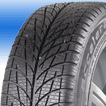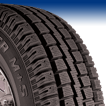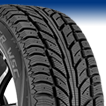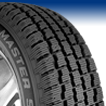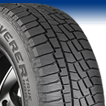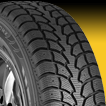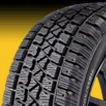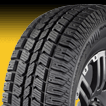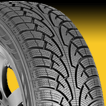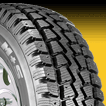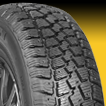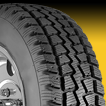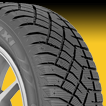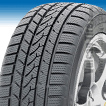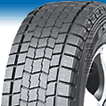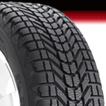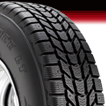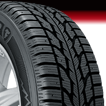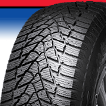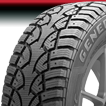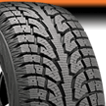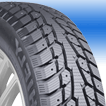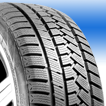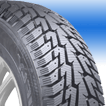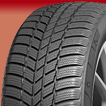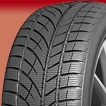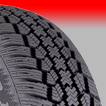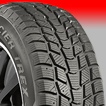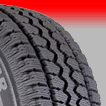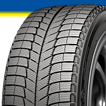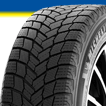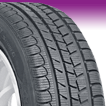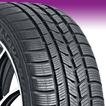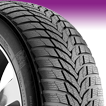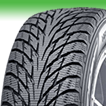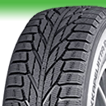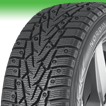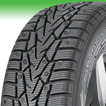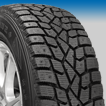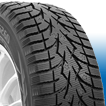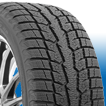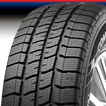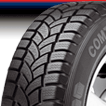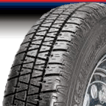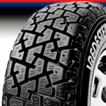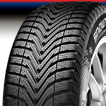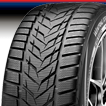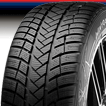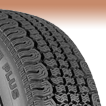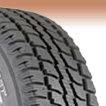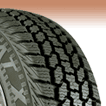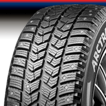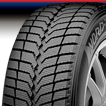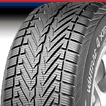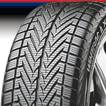Winter Tire prices starting at only $37 per tire!
Winter Tires
Winter
Snow
Winter - Dedicated winter tires offer the ultimate in snow and ice traction that even the best all-season tires can’t match. If you need to be on the road in cold, snowy conditions, your vehicle needs winter tires.
Drivers with all-season tires often believe their vehicle is ready for winter weather. But winter tires are not the same as all-season tires. Winter tires are optimized for use in cold winter weather conditions. Features like deeper tread depths, specialized tread designs and tread compounds and more “biting edges” improve grip and handling for safe driving in snowy conditions.
A dedicated winter tire bears the Severe Snow Service Symbol which depicts three mountain peaks and a snowflake. This symbol indicates the tire will provide exceptional winter traction.
Whether you need to be on the road in snowy conditions for work or play, the goal of the winter tire is to ensure your safety. With winter tires installed a vehicle is less likely to slide or skid. You will find your stopping and acceleration abilities are improved, as well as traction and handling.
For safety reasons winter tires should always be installed as a complete set of four.
Drivers with all-season tires often believe their vehicle is ready for winter weather. But winter tires are not the same as all-season tires. Winter tires are optimized for use in cold winter weather conditions. Features like deeper tread depths, specialized tread designs and tread compounds and more “biting edges” improve grip and handling for safe driving in snowy conditions.
A dedicated winter tire bears the Severe Snow Service Symbol which depicts three mountain peaks and a snowflake. This symbol indicates the tire will provide exceptional winter traction.
Whether you need to be on the road in snowy conditions for work or play, the goal of the winter tire is to ensure your safety. With winter tires installed a vehicle is less likely to slide or skid. You will find your stopping and acceleration abilities are improved, as well as traction and handling.
For safety reasons winter tires should always be installed as a complete set of four.
Use the drop-down boxes below to search for Winter Tires by size.
×
Finding your Tire Size
If you are unsure of your vehicle's tire size the best place to find this information is on the vehicle itself. Do not rely on websites or even your vehicle's owner's manual to determine your tire size. Modern vehicles offer many tire and wheel options so it is always best to check your vehicle itself to determine what tire you need.
First, find your vehicle load and tire information placard. This placard is usually located on the door jamb of the driver's door. See an example of this placard in the picture below.
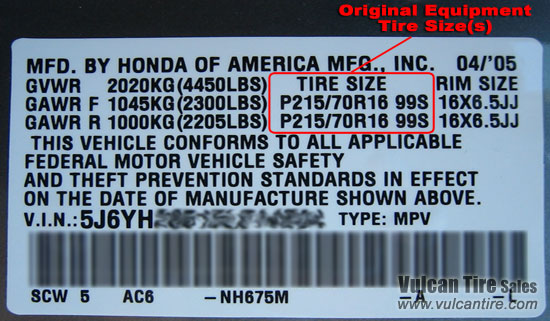
Next, you will want to look for your tire size and service description on the tire itself. See the picture below for help on finding your tire size on your tire's sidewall.
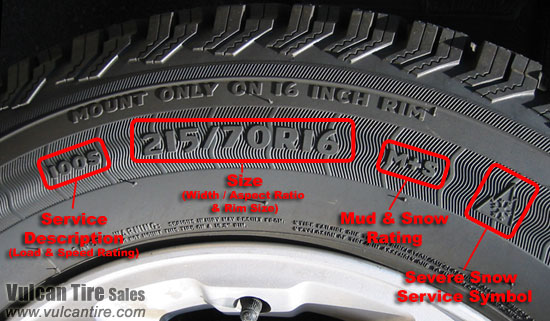
The tire size listed on the tire information placard should match that of the tires on your car. If the tires on your car are not original, the "service description" may not match exactly, this is generally ok. (More on service descriptions below)
Understanding your Tire Size (What replacement tires are right for you?)
There are two important parts to your tire size; the size itself and the service description:
1. Size The tire size is made up of three numbers. The first number is the tire "width" (listed in millimeters) followed by a "/"; second, is the "aspect ratio" (the sidewall height listed as a percentage of the width) followed by a "R"; then finally the rim size (rim diameter, listed in inches). When determining what tire you need all three of these numbers (width, aspect ratio and rim size) should match exactly.
2. Service Description The tire service description is made up of two parts. The first is a two or three digit number indicating the "load index" of the tire. This determines the weight the tire can carry. When replacing tires, you should select a tire with the same or higher load index than what is listed on the tire information placard (not necessarily what is listed on your current tires).
Following the load index number is a letter called the "speed rating". This letter determines the top speed this tire can handle. (In addition, higher speed ratings usually mean better handling.) In general, you should select a speed rating that indicates the same top speed or higher than what is listed on your tire information placard (not necessarily what is listed on your current tires). In the case of snow tires, it is ok to use a lower speed rating than what your vehicle indicates. (Note that speed rating top speeds do not follow alphabetical order, click here for speed rating values.)
close
If you are unsure of your vehicle's tire size the best place to find this information is on the vehicle itself. Do not rely on websites or even your vehicle's owner's manual to determine your tire size. Modern vehicles offer many tire and wheel options so it is always best to check your vehicle itself to determine what tire you need.
First, find your vehicle load and tire information placard. This placard is usually located on the door jamb of the driver's door. See an example of this placard in the picture below.

Next, you will want to look for your tire size and service description on the tire itself. See the picture below for help on finding your tire size on your tire's sidewall.

The tire size listed on the tire information placard should match that of the tires on your car. If the tires on your car are not original, the "service description" may not match exactly, this is generally ok. (More on service descriptions below)
Understanding your Tire Size (What replacement tires are right for you?)
There are two important parts to your tire size; the size itself and the service description:
1. Size The tire size is made up of three numbers. The first number is the tire "width" (listed in millimeters) followed by a "/"; second, is the "aspect ratio" (the sidewall height listed as a percentage of the width) followed by a "R"; then finally the rim size (rim diameter, listed in inches). When determining what tire you need all three of these numbers (width, aspect ratio and rim size) should match exactly.
2. Service Description The tire service description is made up of two parts. The first is a two or three digit number indicating the "load index" of the tire. This determines the weight the tire can carry. When replacing tires, you should select a tire with the same or higher load index than what is listed on the tire information placard (not necessarily what is listed on your current tires).
Following the load index number is a letter called the "speed rating". This letter determines the top speed this tire can handle. (In addition, higher speed ratings usually mean better handling.) In general, you should select a speed rating that indicates the same top speed or higher than what is listed on your tire information placard (not necessarily what is listed on your current tires). In the case of snow tires, it is ok to use a lower speed rating than what your vehicle indicates. (Note that speed rating top speeds do not follow alphabetical order, click here for speed rating values.)
close
- OR -
Browse Winter Tires by brand below.
Browse Winter Tires by brand below.
Accelera
Winter
Snow
Cooper
Winter
Snow
Eldorado
Winter
Snow
Falken
Winter
Snow
Firestone
Winter
Snow
GT Radial
Winter
Snow
General
Winter
Snow
Hankook
Winter
Snow
Hifly
Winter
Snow
Jinyu
Winter
Snow
Mastercraft
Winter
Snow
Michelin
Winter
Snow
Nexen
Winter
Snow
Nokian
Winter
Snow
Sumitomo
Winter
Snow
Toyo
Winter
Snow
Vredestein
Winter
Snow
Discontinued: Limited Availability - Primarily for Reference -
Winter
Snow
© Copyright 1997-2025, Vulcan Sales, Inc




